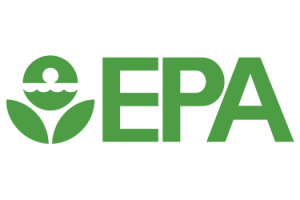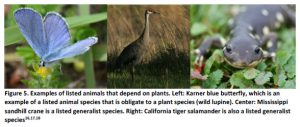 Here of late my blogs have really been about one topic, EPA, EPA, EPA. Does saying it three times real fast summon the ghost of Rachel Carson? There is a reason for this focus, as there are major fundamental changes occurring within the EPA. Many of these changes affect the use of pesticides. Its all part of a cornucopia of strategies, so read on to find out What is a Herbicide Strategy?
Here of late my blogs have really been about one topic, EPA, EPA, EPA. Does saying it three times real fast summon the ghost of Rachel Carson? There is a reason for this focus, as there are major fundamental changes occurring within the EPA. Many of these changes affect the use of pesticides. Its all part of a cornucopia of strategies, so read on to find out What is a Herbicide Strategy?
Regulatory nerds out there will know that just this week the EPA finalized their Herbicide Strategy. The press release gives you the highlights and directs you to the federal register where you can find all the documents. This comes on the heels of the draft proposal for the Insecticide Strategy. There is also the Rodenticide Strategy, and the forthcoming Fungicide Strategy. That’s so much strategy I feel like I’m playing the game Stratego or Settlers of Catan. All these strategies, what is going on?
Why Now?
EPA gets sued, kind of a lot. Several groups claimed they were not meeting their obligations to protect endangered species from pesticides. Those multiple lawsuits became one mega lawsuit and in essence the courts said “You are not meeting your obligations, do better” (this is my simplistic not at ALL lawyerly take on this…though I am skilled in bird law). At this point EPA went to work in finding a way to streamline evaluating pesticides and endangered species interactions. Before it was pesticide by pesticide and was unworkable, leaving the EPA too far behind. This is where the strategies lay out a framework for more quickly addressing the potential risk pesticides pose to endangered species and finding a way to mitigate that through current law. You may remember we did blogs on this some time back related to Biological Evaluations and Biological Opinions.

The Herbicide Strategy is a key piece of this attempt to get into better compliance with the endangered species requirements. Instead of only looking pesticide by pesticide, the idea is to lump them by characteristic and use pattern. The primary risk from herbicides is when they drift or move off site from the field where they are sprayed. Although many herbicides may not pose a direct threat to an endangered mammal for instance, if it kills a plant that mammal depends on it could. There are also over 450 listed endangered plant species that were addressed in this strategy. So how do they aim to protect these species?
EPA has a three-step approach:
-
Identify potential for population-level impacts: Will these products have any toxic impact on the listed species, if so clearly define that?
-
Identify type and level of mitigation: What types of things would mitigate the impact of those products that do pose a risk?
-
Identify where mitigation applies: Is this simply crop dependent, state dependent, or highly small and defined areas?
In essence the EPA is more robustly looking at endangered species during the registration and reregistration process, making faster more widespread decisions, and balancing that with the flexibility needed to change in the future. Most of the mitigations focus on keeping drift/erosion, basically keeping the herbicide on the farm, as its primary focus. This makes sense as very few if any endangered species would be expected to use an agricultural field as suitable habitat. However, there could very much be suitable habitat close by, so a renewed focus on ensuring product stays on the field is primary.
Mitigation
This is handled by assigning mitigation points based on how great the risk of erosion or drift might be. EPA defined this across the country and will assign areas as very low, low, medium, or high risk. These require 3, 6, or 9 points worth of mitigation, respectively (very low likely to have no points needed). Get enough points from the menu of options, carry on. Fail to get enough points, you can’t use the product. I made that seem easy, the devil is always in the details, BUT for the most part it’s workable. The best part is by NOT having this etched in stone on the label, but found on a website, EPA has maximum flexibility to make changes as needed. In case you missed that, WEBSITES count as label now, so if a website is on the label, it counts as label too. For an idea on what things count to mitigate risk the check out the Mitigation Menu. With the “Strategy” just now approved, expect much more detailed information in the future AND a points calculator to make this a little easier.

Some areas may carry an extra level of risk or have other issues that need to be addressed, this is where our good friend PULA’s show up. Remember a BLT is more than just a sandwich. Follow those additional instructions, assuming you have enough mitigation points, and away you go.
I know that is a lot so let’s recap super simple:
- EPA must protect endangered species
- Registration will now address that
- Labels will directly inform about endangered species
- Find your mitigation points
- Check if BLT applies
For some examples of what this might look like in the real world, check out and download the file EPA added to the docket. It gives examples from all over the country. Several Florida examples are included.
What Next?
This is not the last time you will see us discuss this topic. This blog does NOT have ALL the answers, in fact it has very few. This is still a “strategy” which means implementation is still some time off. We can all start being prepared now. Even though some of the details may change, the overall structure won’t. Your labels will have information about mitigating endangered species risk, you WILL have to go to a website (possibly more), and you might have to change some practices.
Way more details will be coming, we will blog them, we will train on them, you all will be ready, trust us. At least for now you have my “Cliff’s notes” (anybody remember those?) version, links to read and study on your own. This should help you answer “What is a Herbicide Strategy?”.
Click to Subscribe
 2
2
